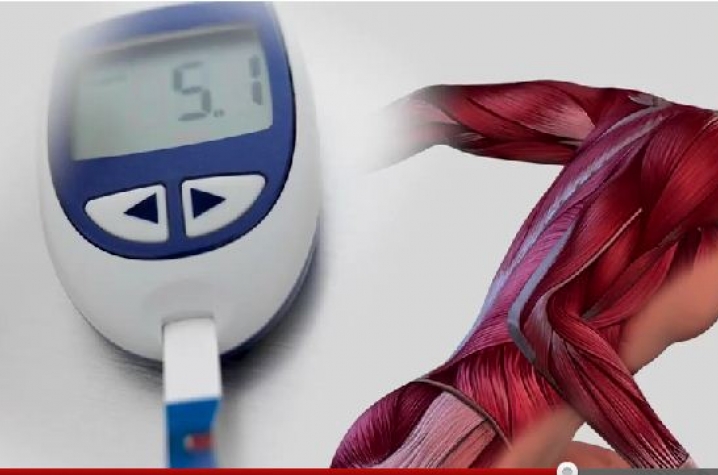From Test Tubes to Treadmills: Exercise Research at the University of Kentucky
LEXINGTON, Ky. (Oct. 13, 2011) — Kentuckians need to exercise.
The Commonwealth is one of 12 states with a 30 percent or higher prevalence of obesity. In addition, 11.4 percent of Kentucky residents have diabetes, higher than the national average. And a recent article in Men's Health magazine ranked Lexington, Ky., as the most sedentary city in the nation.
As dire as these statistics seem, to scientists at the University of Kentucky, they are a call to action. Researchers at UK are studying every aspect of exercise — from the test tube to the treadmill — to help Kentuckians exercise regularly, safely, and in the most beneficial ways.
Exercise science is a major item on the research agenda for the UK College of Health Sciences. According to Charlotte Peterson, associate dean for research, the goal is to "get down to the nitty-gritty of how exercise is working, so we can help people exercise efficiently and perhaps understand the interplay between physical activity, nutrition, other environmental stimuli they are being exposed to, to help them maintain their health.”
The College of Health Sciences is engaged in research including modeling of runners' gaits, and movement during actions such as jumping and changing directions. The goal of the research is to learn how to train athletes to make these movements properly, to avoid injury that could take them out of sports and exercise altogether.
“We have aerobic exercise studies going on at the college, as well as resistance trainingto try to understand the mechanisms that allow muscle to function most efficiently. And, we also have a performance study that we are finishing up on older people, trying to understand the influence of physical activity and cognitive function," Peterson said.
Many faculty from the College of Health Sciences are joined in this research pursuit through collaborations among members of the Center for Muscle Biology. With more than $14 million in funding and led by Karyn Esser, the Center is comprised of more than 100 faculty, postdocs and graduate students focusing on understanding and treating muscle weakness.
"As director of the Center I am really quite excited, because there are tremendous opportunities in terms of helping individuals deal with chronic disease issues. So whether you’re talking about diabetes, cancer or heart disease, while fixing the muscle won’t fix the primary disease, it actually may contribute a lot to the wellness of the patient. I think that’s really where I see us contributing significantly," Esser said.
Health Sciences also collaborates with the Barnstable Brown Kentucky Diabetes and Obesity Center. Peterson is currently partnering with Philip Kern, Director of the Barnstable Brown Center, on a study designed to understand the effects of exercise on insulin sensitivity and diabetes prevention. According to Peterson, the goal is to "try to understand how obesity affects muscle function and how exercise can counteract that."
Kern is studying the role of the inflammatory system in obesity.
“It was a surprise to me some years ago when fat tissue was found to express inflammatory proteins—proteins we normally associate with infection and cancer. Having inflammatory cells in our fat tissue might have been a protective force at one time. If you were just gored by a saber tooth tiger while defending your home, you might want to have some inflammatory cells in your fat to help fight infection and recover from injury.
"Nature never imagined we would be as fat as we are now. Fat tissue inflammatory cells may represent a natural defense mechanism that has gone amiss as we get more and more obese," Kern said.
Kern is currently examining the effect of Omega 3 fish oil products on inflammation. Omega 3s not only lower triglycerides, but work as anti-inflammatory agents.
"We are recruiting people with pre-diabetes and putting them on fish oils or placebo, and then we are performing fat and muscle biopsies to look for changes in inflammation," Kern said.
“Type 2 diabetes is clearly a big problem in this state and in the country, and type 2 diabetes is characterized by decreased sensitivity of tissues to insulin. Insulin causes our tissues to take up sugars and people become insulin resistant with obesity. Since 80 to 90 percent of sugar uptake occurs in skeletal muscle, we argue that type 2 diabetes is at least in part a muscle disease," Esser said.
Kern is also the head of the UK Center for Clinical and Translational Science. In June, the CCTS received $20 million from the National Institutes of Health, to speed up the process of taking discoveries made in the lab to patients in doctors' offices.
“Part of the rationale behind clinical research is that you learn from your patients and your patients inform the research. In the clinic you see patients with all stages of disease, and this helps you recognize problems, and it helps you ask questions that need to be asked," Kern said.
From the laboratory to the workout room, UK scientists are working to help Kentuckians exercise more efficiently, more frequently and with better results.
To learn more, see the related article in the Lexington Herald-Leader and view the below video.
MEDIA CONTACT: Allison Elliott, allison.elliott@uky.edu





